
Three-Headed Dragon | Three-Headed Dragon | Three-Headed Dragon 2014
Architecture of Upper Silesia (1922-1933)
Cabinet of Architecture/ Opava Cultural Organization OKO
from January 9 to March 9, 2014
The not-so-long period of twenty years between the wars left an unmistakable mark on the architecture of all Upper Silesia. It was a time of unbridled creativity and progressive experiments characteristic of Europe in the 1930s... Now, seventy years later, under a thick layer of dust, we discover the fading beauty...
The exhibition "Three-Headed Dragon" is another step in the eponymous project, which is part of activities aimed at mapping the architectural heritage of the 20th century. In its first phase, we focus on the architecture of the interwar period.
The initial impulse for the exhibition came from the book "The Art of Upper Silesia from the Middle Ages to the End of the 20th Century," edited by Ewa Chojecka, which captivated us with its breadth, respect for the past and present, and scholarly objectivity. Enthusiasm and inspiration were also provided by the first "Moravian-Silesian" pieces from The Flourishing Cities, which were not only educational but also kindly and elegantly playful.
After viewing the documentary film by Polish director Jadwiga Kocur "Two-Headed Dragon. Architecture of the Interwar Period in Upper Silesia," we already knew we had to return the architecture and art of first-republic Czechoslovakia to the context of all Upper Silesia.
Every era has its untamed dragon – here, the functionalist movement and its two heads, symbolizing both cultural and national (Polish and German) elements of the described area.
We believe that for completeness and understanding of the spirit of that era in Upper Silesia as a whole, the "interwar dragon" must have a third head, a "Czech" head.
The exhibition is continuously supplemented with new objects and is conceived as a long-term project (2009 to 2019) aimed at capturing the architectural heritage of the 20th century. In its first phase, it focuses on the architecture of the interwar period.
Exhibition Curators:
Tadeáš Goryczka, Jaroslav Němec (Czech part), Ryszard Nakonieczny, Justyna Wojtas (Polish and German part)
Exhibition Presentation Venues:
Cabinet of Architecture – House of Art/ GVUO, Ostrava/ 2009
Gallery of the Faculty of Architecture, Gliwice/2010
Museum of Architecture in Wrocław, Wrocław/ 2010
Gallery Café Silesia, Zabrze/ 2010
Gallery of Architecture SARP, Katowice/ 2010
Provincial Pedagogical Library, Strzelce Opolskie/ 2011
Cabinet of Architecture – House of Art/ OKO, Opava/ 2014
The exhibition is accompanied by a text by Radovan Lipus, a native of Upper Silesia, who commented on the topic:
Silesia – a vanished land. A Central European Atlantis. A piece of continent where language, rulers, nationality, and faith have changed for centuries. In the memory of ancient maps, a proud eagle embraces an empire from Jablunkov to somewhere beyond Görlitz. Can you hear? Wrocław. Breslau. Wroclaw.
The smoke of the furnaces from Katowice is the brother of the fumes from Bohumín, Ostrava, and Třinec. Upper and Lower Silesia, two sides of one golden coin, old and rare minting. A land rich and full, from which everyone wanted to extract the maximum. Vienna. Berlin. Warsaw and Prague. Every throne, every government. Coal and steel. A cage with miners screeches down into the depths of anthracite like a noisy bathyscaphe. Saint Barbara, please grant me to return alive and healthy again! Home to the colony. Where there are five children with a weary woman. Behind the fence, black currants. The facade of a sooty brick house. Römergrube. Salma. Nikiszowiec. A broken little tree with torn cherries. Chickens. Pipes and wires with all those - telegraphs and urgent dispatches. Heaps. Slag. Dust. Up there, somewhere in the waves of air, it is never silent, to this day it echoes: swing, prayers, weather forecasts, singing and crying. Shooting. Siren. Switch: All/Nothing. It is still transmitted by the wooden transmitter near Gliwice.
An exclamation point from the hot August of thirty-nine. Whatever you ask – Silesia will answer you. How does one die? How does one become wealthy? How does one starve? How does one sharpen a knife? How is vodka smuggled? How does one avoid meeting – and how to meet again in scattered villages and the area's too overgrown cities? A short speech in economically precise gestures translated into urbanism and architecture. Brick church towers look down at the world just like chimneys and blast furnaces. Iron bridges create punctuation for the river. Odra. Olza. Biała.
No name here is ever whole in just one language. Cieszyn. Těšín. Teschen. Like a round box for roasted grains from Brazil – Café Avion - a legend incomplete in memories lives, crammed into just seven years. Great European history – a small Silesian world. Rosalie Wiesner. Václav Nekvasil. Jewish restaurateur. Czech architect. Own blood into foreign veins. German and Polish armies. Explosion! Walk through Silesia, gather in the database of memories the houses and places that sound miserable, magnificent, and sonorous. Opponents. Victims. Brothers. Enemies. One land, four histories. Fields in full sun with the shadows of mining towers. July. Mine! Smelt! Survive! Silesia? Architect Leopold Bauer with his buildings from Krnov, Opava, Bílsko to Vienna. Silesia. Elegant modernism here flickers restlessly with the volatile shimmer of other names – Otto Prutscher, Tadeusz Michejda, Dominikus Böhm. The cities here – pulsating stigmas into the nights. Streets – rare flowers, wild predatory animals. Buildings – exotic shells worth exploring. The Šlapet brothers take over the baton of soft curves from Hans Scharoun. And in Gliwice, the thirty-three-year-old Erich Mendelsohn is just stepping onto the balcony. In front of him stands the elegant silk house of Erwin Weichmann.
The illuminated concert hall in Beuthen/Bytom astounds with pastel tones, dreamed up by Hans Poelzig. Silesia! A land that belongs to no one and everyone. Diversity in unity. Unity in diversity. Here, everyone is at home and everyone is someone else's guest.
Silesia – a vanished land. A Central European Atlantis. Now it is up to us to add to its celestial map – besides pragmatic highways, square hypermarkets, and empty noise barriers – new radiant gems. New architectural constellations.
from January 9 to March 9, 2014
The not-so-long period of twenty years between the wars left an unmistakable mark on the architecture of all Upper Silesia. It was a time of unbridled creativity and progressive experiments characteristic of Europe in the 1930s... Now, seventy years later, under a thick layer of dust, we discover the fading beauty...
The exhibition "Three-Headed Dragon" is another step in the eponymous project, which is part of activities aimed at mapping the architectural heritage of the 20th century. In its first phase, we focus on the architecture of the interwar period.
The initial impulse for the exhibition came from the book "The Art of Upper Silesia from the Middle Ages to the End of the 20th Century," edited by Ewa Chojecka, which captivated us with its breadth, respect for the past and present, and scholarly objectivity. Enthusiasm and inspiration were also provided by the first "Moravian-Silesian" pieces from The Flourishing Cities, which were not only educational but also kindly and elegantly playful.
After viewing the documentary film by Polish director Jadwiga Kocur "Two-Headed Dragon. Architecture of the Interwar Period in Upper Silesia," we already knew we had to return the architecture and art of first-republic Czechoslovakia to the context of all Upper Silesia.
Every era has its untamed dragon – here, the functionalist movement and its two heads, symbolizing both cultural and national (Polish and German) elements of the described area.
We believe that for completeness and understanding of the spirit of that era in Upper Silesia as a whole, the "interwar dragon" must have a third head, a "Czech" head.
The exhibition is continuously supplemented with new objects and is conceived as a long-term project (2009 to 2019) aimed at capturing the architectural heritage of the 20th century. In its first phase, it focuses on the architecture of the interwar period.
Exhibition Curators:
Tadeáš Goryczka, Jaroslav Němec (Czech part), Ryszard Nakonieczny, Justyna Wojtas (Polish and German part)
Exhibition Presentation Venues:
Cabinet of Architecture – House of Art/ GVUO, Ostrava/ 2009
Gallery of the Faculty of Architecture, Gliwice/2010
Museum of Architecture in Wrocław, Wrocław/ 2010
Gallery Café Silesia, Zabrze/ 2010
Gallery of Architecture SARP, Katowice/ 2010
Provincial Pedagogical Library, Strzelce Opolskie/ 2011
Cabinet of Architecture – House of Art/ OKO, Opava/ 2014
The exhibition is accompanied by a text by Radovan Lipus, a native of Upper Silesia, who commented on the topic:
Silesia – a vanished land. A Central European Atlantis. A piece of continent where language, rulers, nationality, and faith have changed for centuries. In the memory of ancient maps, a proud eagle embraces an empire from Jablunkov to somewhere beyond Görlitz. Can you hear? Wrocław. Breslau. Wroclaw.
The smoke of the furnaces from Katowice is the brother of the fumes from Bohumín, Ostrava, and Třinec. Upper and Lower Silesia, two sides of one golden coin, old and rare minting. A land rich and full, from which everyone wanted to extract the maximum. Vienna. Berlin. Warsaw and Prague. Every throne, every government. Coal and steel. A cage with miners screeches down into the depths of anthracite like a noisy bathyscaphe. Saint Barbara, please grant me to return alive and healthy again! Home to the colony. Where there are five children with a weary woman. Behind the fence, black currants. The facade of a sooty brick house. Römergrube. Salma. Nikiszowiec. A broken little tree with torn cherries. Chickens. Pipes and wires with all those - telegraphs and urgent dispatches. Heaps. Slag. Dust. Up there, somewhere in the waves of air, it is never silent, to this day it echoes: swing, prayers, weather forecasts, singing and crying. Shooting. Siren. Switch: All/Nothing. It is still transmitted by the wooden transmitter near Gliwice.
An exclamation point from the hot August of thirty-nine. Whatever you ask – Silesia will answer you. How does one die? How does one become wealthy? How does one starve? How does one sharpen a knife? How is vodka smuggled? How does one avoid meeting – and how to meet again in scattered villages and the area's too overgrown cities? A short speech in economically precise gestures translated into urbanism and architecture. Brick church towers look down at the world just like chimneys and blast furnaces. Iron bridges create punctuation for the river. Odra. Olza. Biała.
No name here is ever whole in just one language. Cieszyn. Těšín. Teschen. Like a round box for roasted grains from Brazil – Café Avion - a legend incomplete in memories lives, crammed into just seven years. Great European history – a small Silesian world. Rosalie Wiesner. Václav Nekvasil. Jewish restaurateur. Czech architect. Own blood into foreign veins. German and Polish armies. Explosion! Walk through Silesia, gather in the database of memories the houses and places that sound miserable, magnificent, and sonorous. Opponents. Victims. Brothers. Enemies. One land, four histories. Fields in full sun with the shadows of mining towers. July. Mine! Smelt! Survive! Silesia? Architect Leopold Bauer with his buildings from Krnov, Opava, Bílsko to Vienna. Silesia. Elegant modernism here flickers restlessly with the volatile shimmer of other names – Otto Prutscher, Tadeusz Michejda, Dominikus Böhm. The cities here – pulsating stigmas into the nights. Streets – rare flowers, wild predatory animals. Buildings – exotic shells worth exploring. The Šlapet brothers take over the baton of soft curves from Hans Scharoun. And in Gliwice, the thirty-three-year-old Erich Mendelsohn is just stepping onto the balcony. In front of him stands the elegant silk house of Erwin Weichmann.
The illuminated concert hall in Beuthen/Bytom astounds with pastel tones, dreamed up by Hans Poelzig. Silesia! A land that belongs to no one and everyone. Diversity in unity. Unity in diversity. Here, everyone is at home and everyone is someone else's guest.
Silesia – a vanished land. A Central European Atlantis. Now it is up to us to add to its celestial map – besides pragmatic highways, square hypermarkets, and empty noise barriers – new radiant gems. New architectural constellations.
Radovan Lipus
The English translation is powered by AI tool. Switch to Czech to view the original text source.
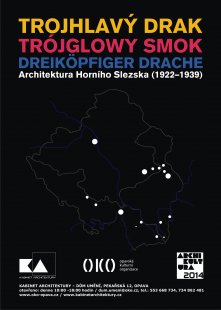
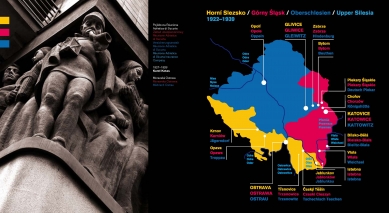
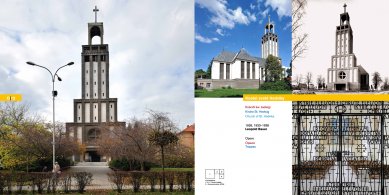

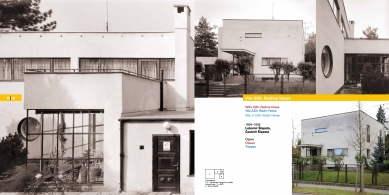
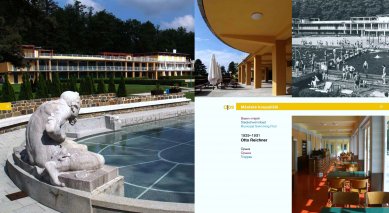
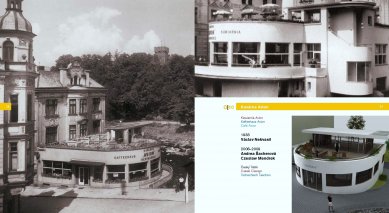

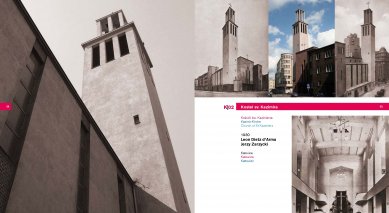

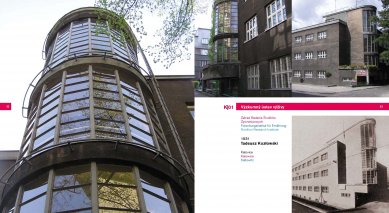
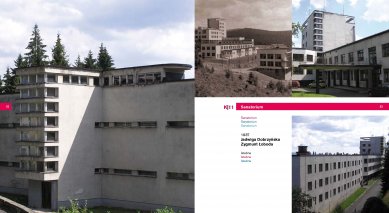
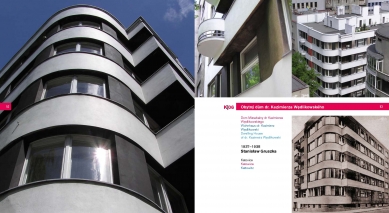

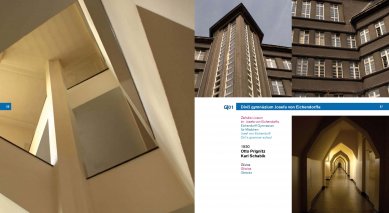
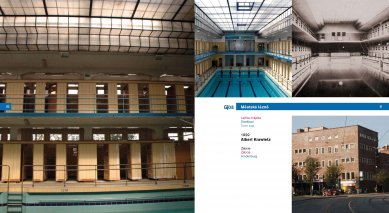
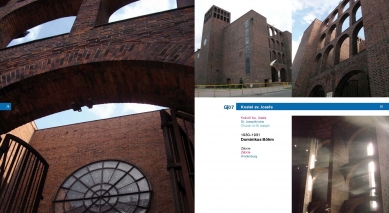
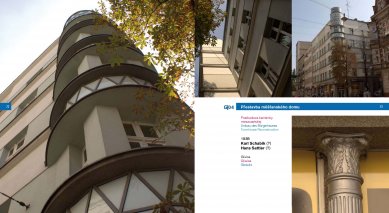
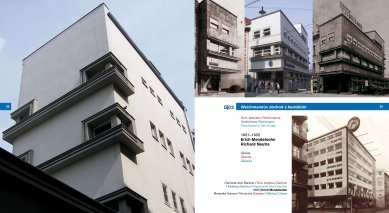
0 comments
add comment










